"Your body is a battleground" magnificent art of Barbara Kruger
(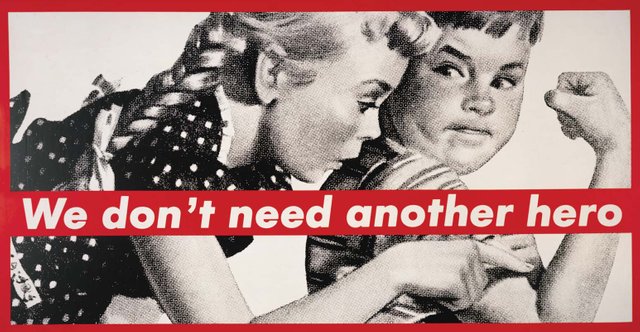 )
)
Barbara Kruger was born in Newark, New Jersey, in 1945. After attending Syracuse University, the School of Visual Arts, and studying art and design with Diane Arbus at Parson’s School of Design in New York, Kruger obtained a design job at Condé Nast Publications. Working for Mademoiselle Magazine, she was quickly promoted to head designer. Later, she worked as a graphic designer, art director, and picture editor in the art departments at House and Garden, Aperture, and other publications. This background in design is evident in the work for which she is now internationally renowned. She layers found photographs from existing sources with pithy and aggressive text that involves the viewer in the struggle for power and control that her captions speak to. In their trademark black letters against a slash of red background, some of her instantly recognizable slogans read “I shop therefore I am,” and “Your body is a battleground." Much of her text questions the viewer about feminism, classicism, consumerism, and individual autonomy and desire, although her black-and-white images are culled from the mainstream magazines that sell the very ideas she is disputing. As well as appearing in museums and galleries worldwide, Kruger’s work has appeared on billboards, buscards, posters, a public park, a train station platform in Strasbourg, France, and in other public commissions. She has taught at the California Institute of Art, The School of the Art Institute of Chicago, and the University of California, Berkeley. She lives in New York and Los Angeles.
(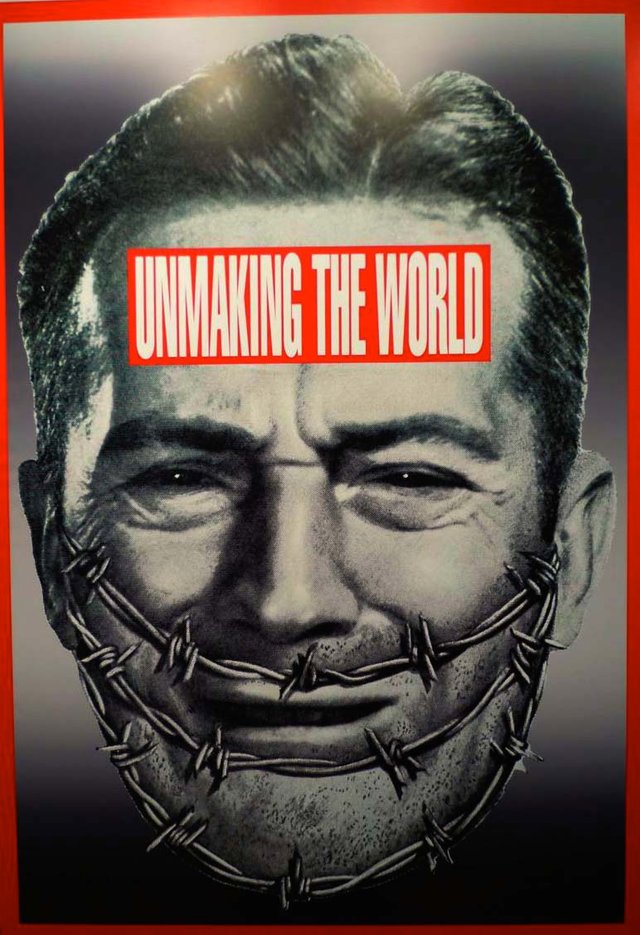 )
)
Much of Kruger's work pairs found photographs with pithy and assertive text that challenges the viewer. Her method includes developing her ideas on a computer, later transferring the results (often billboard-sized) into images. Examples of her instantly recognizable slogans read "I shop therefore I am," and "Your body is a battleground," appearing in her trademark white letters against a red background. Much of her text calls attention to ideas such as feminism, consumerism, and individual autonomy and desire, frequently appropriating images from mainstream magazines and using her bold phrases to frame them in a new context.
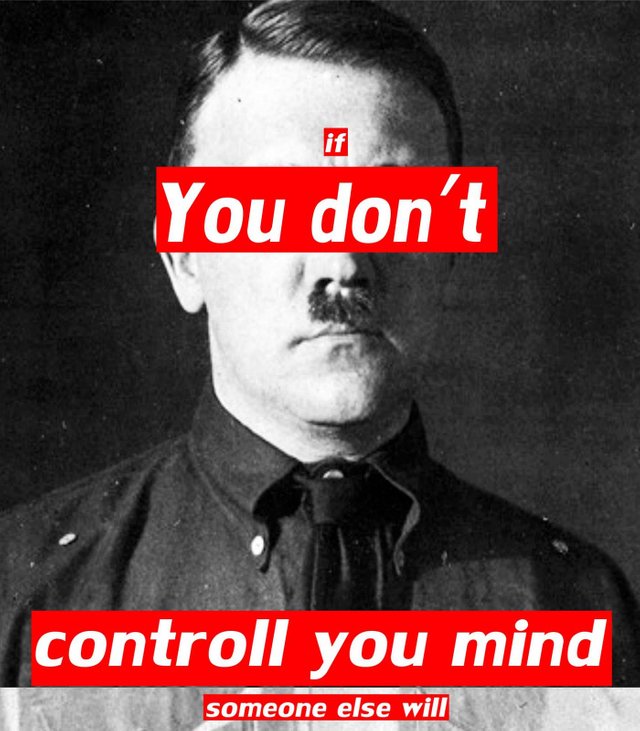
Kruger has said that "I work with pictures and words because they have the ability to determine who we are and who we aren't." A larger category that threads through her work is the appropriation and alteration of existing images. In describing her use of appropriation, Kruger states:
Pictures and words seem to become the rallying points for certain assumptions. There are assumptions of truth and falsity and I guess the narratives of falsity are called fictions. I replicate certain words and watch them stray from or coincide with the notions of fact and fiction.
Her poster for the 1989 Women's March on Washington in support of legal abortion included a woman's face bisected into positive and negative photographic reproductions, accompanied by the text "Your body is a battleground." A year later, Kruger used this slogan in a billboard commissioned by the Wexner Center for the Arts. Twelve hours later, a group opposed to abortion responded to Kruger's work by replacing the adjacent billboard with an image depicting an eight-week-old fetus.

Kruger's early monochrome pre-digital works, known as 'paste ups', reveal the influence of the artist's experience as a magazine editorial designer during her early career. These small scale works, the largest of which is 11 x 13 inches (28 x 33 cm), are composed of altered found images, and texts either culled from the media or invented by the artist. A negative of each work was then produced and used to make enlarged versions of these initial 'paste ups'. Between 1978 and 1979, she completed "Picture/Readings," simple photographs of modest houses alternating with panels of words. From 1992 on, Kruger designed several magazine covers, such as Ms., Esquire, Newsweek, and The New Republic. Her signature font style of Futura Bold type is likely inspired from the "Big Idea" or "Creative Revolution" advertising style of the 1960s that she was exposed to during her experience at Mademoiselle.
In 1990, Kruger scandalized the Japanese American community of Little Tokyo, Los Angeles, with her proposal to paint the Pledge of Allegiance, bordered by provocative questions, on the side of a warehouse in the heart of the historic downtown neighborhood. Kruger had been commissioned by MOCA to paint a mural for "A Forest of Signs: Art in the Crisis of Representation," a 1989 exhibition that also included works by Barbara Bloom, Jenny Holzer, Jeff Koons, Sherrie Levine, and Richard Prince. But before the mural went up, Kruger herself and curator Ann Goldstein presented it at various community meetings over the time period of 18 months. Only after protests did the artist offer to eliminate the pledge from her mural proposal, while still retaining a series of questions painted in the colors and format of the American flag: "Who is bought and sold? Who is beyond the law? Who is free to choose? Who follows orders? Who salutes longest? Who prays loudest? Who dies first? Who laughs last?". A full year after the exhibitionclosed, Kruger's reconfigured mural finally went up for a two-year run.
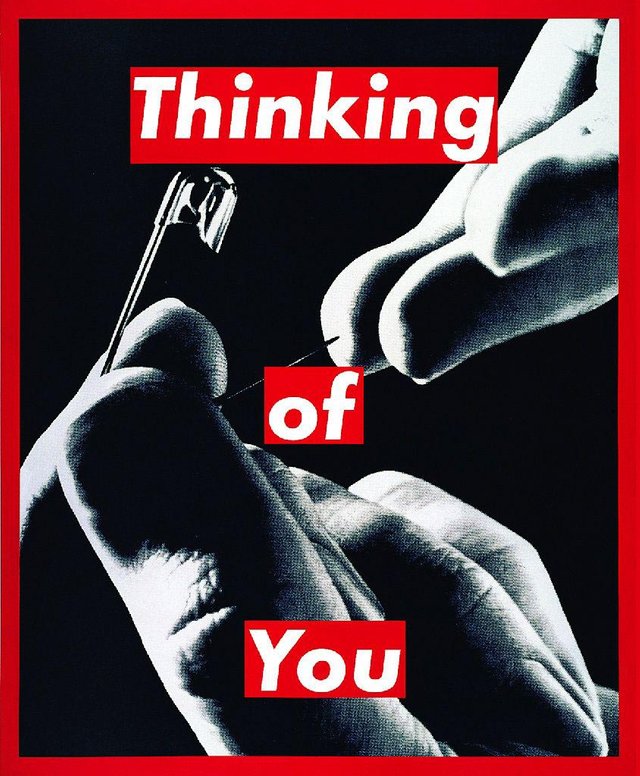
In 1994, Kruger's L'empathie peut changer le monde (Empathy can change the world) was installed on a train station platform in Strasbourg, France. One year later, with architects Henry Smith-Miller and Laurie Hawkinson and landscape architect Nicholas Quennell, she designed the 200-foot-long (60 m) sculptural letters Picture This for a stage and outdoor amphitheater at the North Carolina Museum of Art, Raleigh. Between 1998 and 2008, she created permanent installations for the Fisher College of Business, the Broad Contemporary Art Museum at LACMA, the Moderna Museet, Stockholm, and the Price Center at the University of California, San Diego. For a site-specific piece that she produced at the Parrish Art Museum in 1998, Kruger placed across the upper range of the museum's Romanesque facade stark red letters that read, "You belong here"; below, on columns separating three arched entry portals, stacked letters spelled "Money" and "Taste." As part of the Venice Biennale in 2005, Kruger installed a digitally printed vinyl mural across the entire facade of the Italian pavilion, thereby dividing it into three parts—green at the left, red at the right, white in between. In English and Italian, the words "money" and "power" climbed the portico's columns; the left wall said, "Pretend things are going as planned," Much of Kruger's work pairs found photographs with pithy and assertive text that challenges the viewer. Her method includes developing her ideas on a computer, later transferring the results (often billboard-sized) into images. Examples of her instantly recognizable slogans read "I shop therefore I am," and "Your body is a battleground," appearing in her trademark white letters against a red background. Much of her text calls attention to ideas such as feminism, consumerism, and individual autonomy and desire, frequently appropriating images from mainstream magazines and using her bold phrases to frame them in a new context.
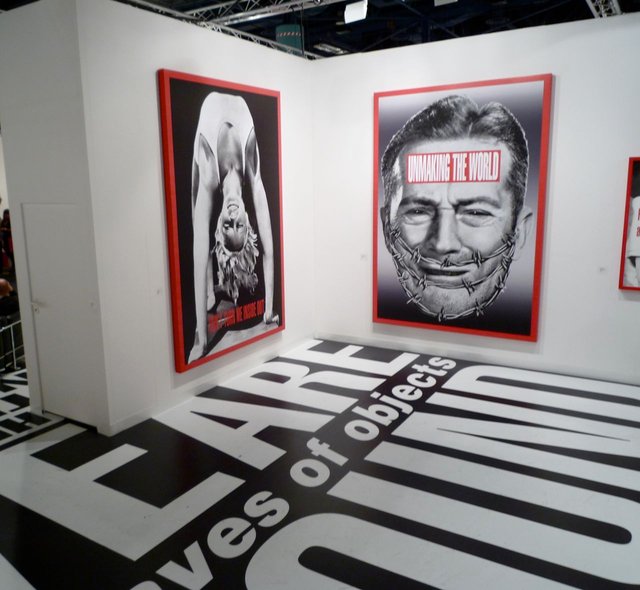
Sources:
http://www.barbarakruger.com/
https://en.wikipedia.org/wiki/Barbara_Kruger
https://slate.com/news-and-politics/2000/07/barbara-kruger-ad-industry-heroine.html
https://rogallery.com/Kruger_Barbara/kruger-biography.html